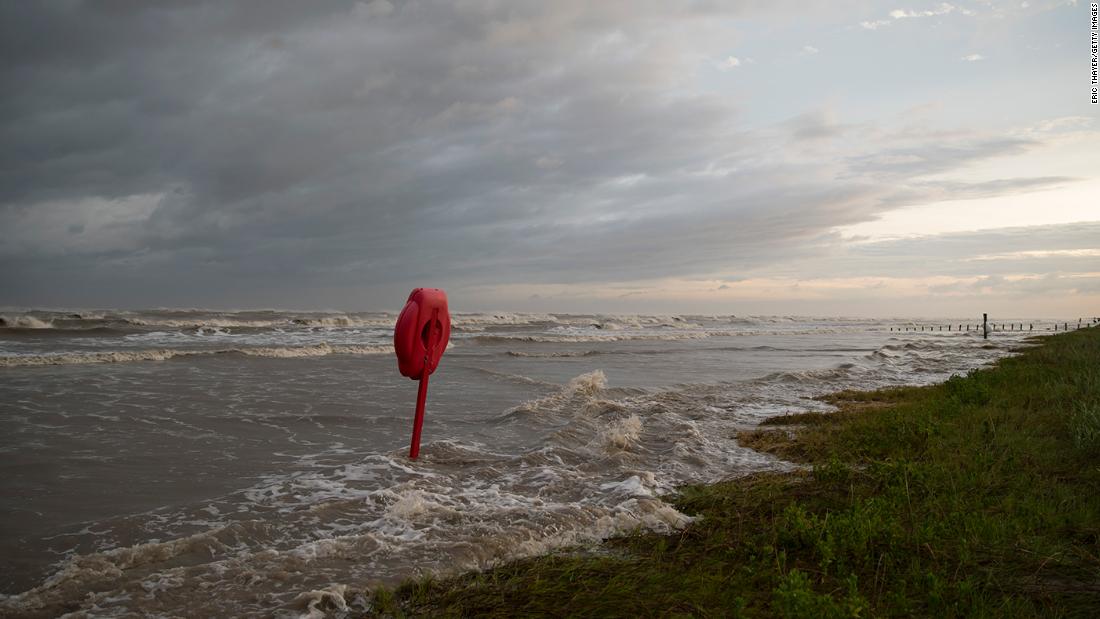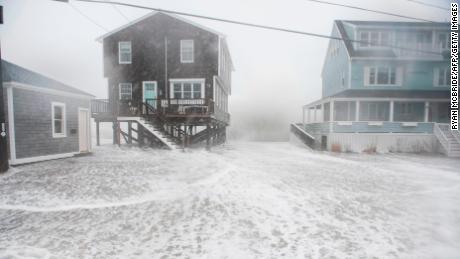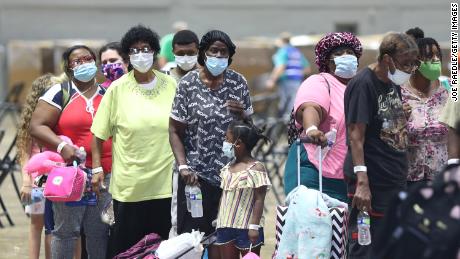Laura hit the Louisiana coastline with an intensity the region has not seen in over a century
“There will be parts of Lake Charles underwater that no living human being has ever seen before,” Louisiana Gov. John Bel Edwards told WWL Radio. “We are marshaling all of our people and assets to go in … and start a very robust search and rescue effort.”
Laura tied with a hurricane from more than 160 years ago for the strongest storm to hit Louisiana. The 1856 hurricane also had winds of 150 mph when it made landfall, CNN meteorologist Brandon Miller said.
More destruction is ahead: The storm’s center still is expected to keep hurricane strength into northwestern Louisiana and possibly into southern Arkansas.


The National Weather Service called predicted surge “unsurvivable.”
Latest developments
Downgraded: Laura weakened to a Category 2 hurricane with maximum sustained winds of 110 mph winds after making landfall and is expected to continue weakening as the storm moves further inland, according to the National Hurricane Center.
Extended storm surge: The storm surge for Laura could spread up to 30 miles inland in southwest Louisiana and Southeast Texas — reaching all the way to Interstate 10 between Beaumont and Lake Charles.
Crawling out from a barricade to find the roof is gone
Widespread destruction is being reported in and around the Louisiana city of Lake Charles, some 35 miles north of the coast.
Paul Heard left his Lake Charles house just as the storm was pulling part of the roof off around 1 a.m., he said.
He took shelter in his car. As he watched from 25 feet away, he “could see my roof was heaving up and down several inches.”
Though he had heard warnings about storm surges, “the damage to my house has been exclusively by wind,” Heard told CNN.
Also in Lake Charles, Tolor White Jr. had dozed off while doing a crossword puzzle under a makeshift “barricade” made of a table and some mattresses. He awoke around 1:15 a.m. to a loud noise, he said.
Part of his roof had been torn off. Water dripped into one of his rooms, and wind had blown out some of his windows.
“I slept through most of it,” he said.
Mat Mcgee told CNN he was near the eyewall of Hurricane Laura when he saw the metal building in front of his barge get ripped apart in Hackberry, Louisiana.
The wind pulled off the roof, the door and knocked over the tower on the site.
Storm surge still a threat
Even though Laura’s center was well inland by dawn Thursday, storm surge still was happening behind it, CNN meteorologist Chad Myers said.
Especially in the storm’s southwest quadrant, winds from the south still are pushing water inland, Myers said.
The National Hurricane Center had warned storm surge reaching up to 20 feet could be among Laura’s greatest threats, along with winds that have prompted a rare “extreme wind warning” for Lake Charles, Beaumont, Port Arthur and other nearby locations.

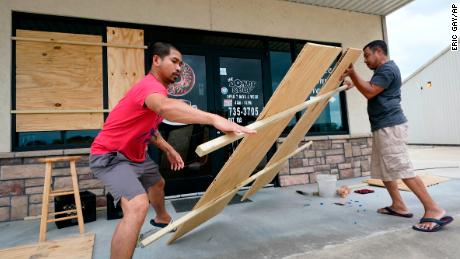
Daoith Porm, left, and Bunsant Khov, board their business as Hurricane Laura nears.
Tens of thousands at risk of flooding
Calcasieu Parish, where the city of Lake Charles is located, has about 100,000 residents who are at risk of flooding, parish spokesman Tom Hoefer told CNN.
The focus Thursday will be on saving lives and transporting people to shelters, he said. The Vermilion Parish Sheriff’s Office said evacuation was key because authorities are concerned about rescue efforts.

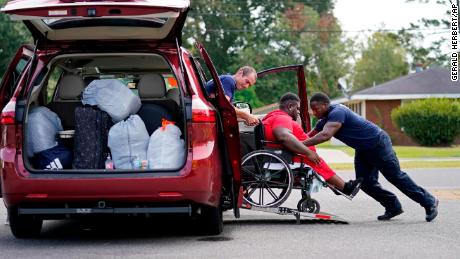
Lake Charles Fire Department personnel Alvin Taylor, right, and Jeremy Harris help Tim Williams into a transport van as he evacuates Lake Charles.
150 residents refused to leave a coastal parish
In Louisiana’s Cameron Parish, about 150 of 6,500 residents have refused to heed a mandatory evacuation order, said Ashley Buller, the parish assistant director of emergency operations.
Sheriff deputies went door-to-door to encourage people to leave, and even the emergency preparedness office evacuated.
Travel trailers were left behind by construction workers on LNG projects. Authorities are concerned about the permanent residents who stayed, Buller said. There have already been reports of water coming up the road.
“We have never experienced anything like this in our history,” Buller said. The hurricane is the third major storm to strike Cameron Parish in the last 15 years — Hurricane Rita and Hurricane Ike were the other two.
She expected Laura to be worse.
“My family has evacuated,” Buller said. “They are two and a half hours to the Northeast. I needed them as far away from this as possible.”
CNN’s Martin Savidge, Brandon Miller, Joe Sutton, Andy Rose and Dave Alsup contributed to this report.
![]()


